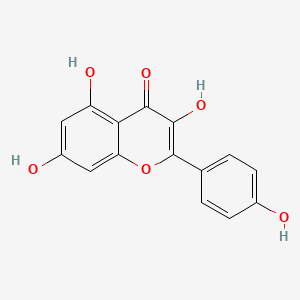It has recently been reported that maple syrup contains polyphenols and shows ORAC (Oxygen Radical Absorbance Capacity, a unit of measurement for antioxidants developed by the NIH) values which compare to commonly eaten fruits and vegetables such as broccoli. Now, further research on maple syrup and its original form, maple water, conducted by Dr Yves Desjardins and his colleagues (at Institut des neutraceutiques et des aliments fonctionnels), has revealed that both products contain equally important quantities of terpenes, and in particular, abscisic acid (see structure), a phytohormone whose health benefits have only recently been discovered.
Vegetable physiologists and botanical researchers have known about the physiological properties of abscisic acid in the vegetable kingdom for a long time, but its health benefits for humans has only recently come to light. Along with other effects, it is known to stimulate insulin release through pancreatic cells and to increase sensitivity of fat cells to insulin, which makes it a potent weapon against metabolic syndrome and diabetes. So its good to see that maple products contain a whole host of complementary active elements. The sugar molecules which provide the energy and sweetness in maple products are inherently complemented by abscisic acid molecules because they encourage insulin homeostasis.
The authors conclude that, further studies are obviously needed before one can more accurately understand how eating maple products affects insulin behavior......
Ref : Dr Yves Desjardins et.al., (Emerging Topics in Health Effects of Fruits and Vegetables symposium which forms part of the 28th International Horticultural Congress in Portugal, August 22-27, 2010.)













